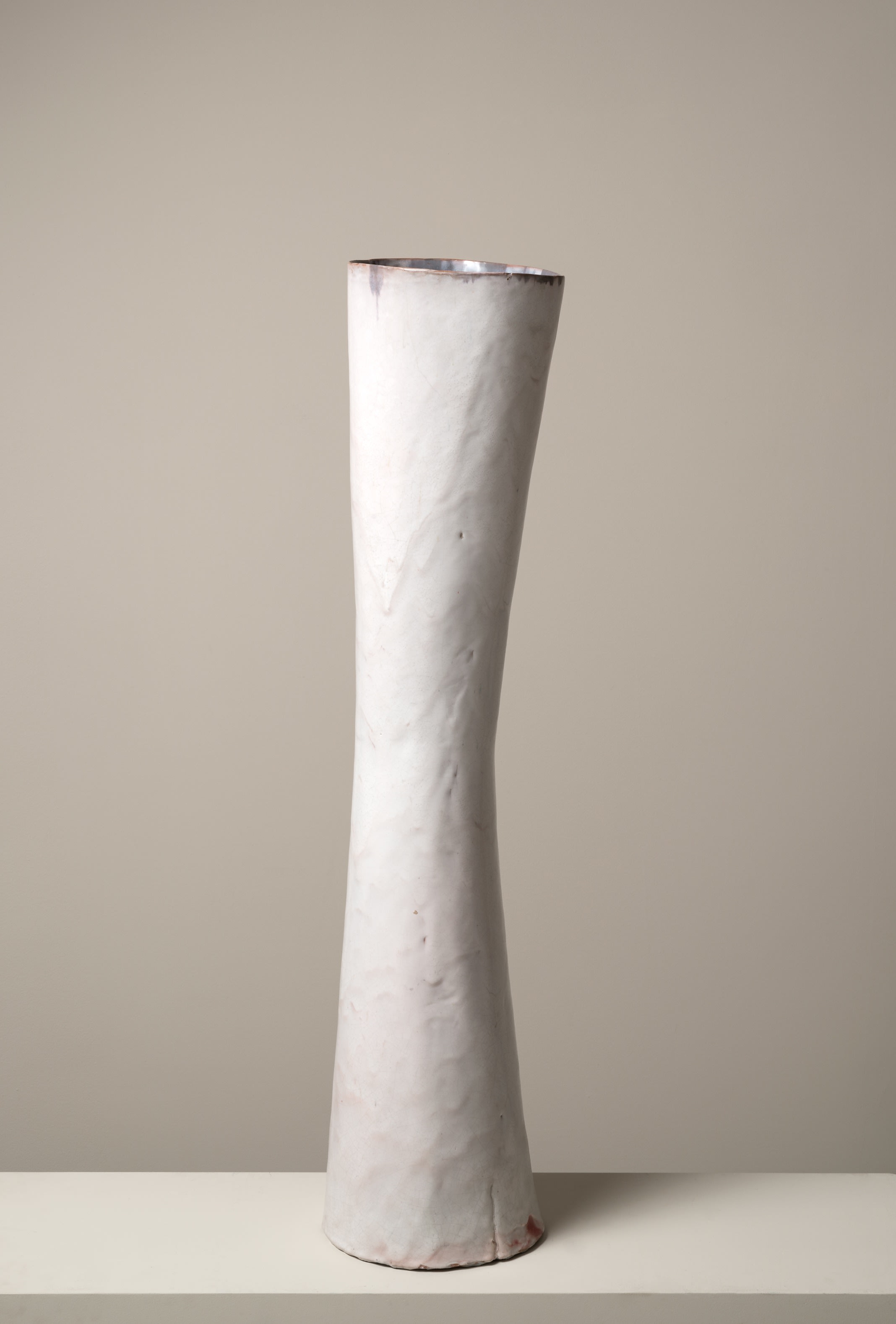-

Fausto Melotti
Vaso, 1950 ca.
Ceramic, polychrome enamel
98 x 18 x 21 cm
-

-

Fausto Melotti in his studio in Milan © Fondazione Fausto Melotti.
-
L’ opera in ceramica di Fausto Melotti si concentra in un arco temporale tra gli anni trenta e sessanta del Novecento e può essere considerata una dei momenti più importanti del suo itinerario artistico e anche un grande successo immediato. La ceramica è molto spesso scultura, con la ricerca di forma e significato: “Brocche con manici che non si possono impugnare, tanto esigua è la distanza che li separa dal corpo dell’oggetto. Tazzine da caffe troppo alte e strette da non permettere al cucchiaino di toccare il fondo… Vasi da fiori nei quali non si sa a chi potrebbe venire in mente di mettere dei fiori. Nella ceramica di Melotti la funzione è posta e al tempo stesso sottratta, come si trattasse di oggetti d’uso il cui uso è impedito, ironicamente offerto e insieme tolto” (M.Carboni, L'angelo del fare. Fausto Melotti e la ceramica, in Fauso Melotti. L'opera in ceramica, a cura di A. Commellato, M.Melotti, p. 15.).
In questo senso i vasi di Melotti si presentano come vere e proprie sculture. Sono distinti dall’autore in tipologie che riflettono il loro senso simbolico, analogico e figurativo: il vaso-luna, vaso-sole, vaso-vescovo, il vaso-clessidra, il vaso-coletto. Molti vasi, come il presente vaso, recano un restringimento situato all’incirca a meta o due terzi dell’altezza, risultato di una torsione impressa manualmente all’argilla nella fase iniziale della lavorazione.
Questo vaso è uno dei pochi vasi che Melotti definiva “grandissimi”, alto 98 cm, eseguito intorno al 1950, smaltato di un elegante bianco-rosa. Con la scelta del colore che esalta la forma minimalistica e le dimensioni del vaso, e con le contrastanti sfumature di grigio dentro, questo vaso può essere considerato uno dei esempi più monumentali dell’opera in ceramica di Melotti.
Fausto Melotti, Vaso, 1950 ca.
Past viewing_room




